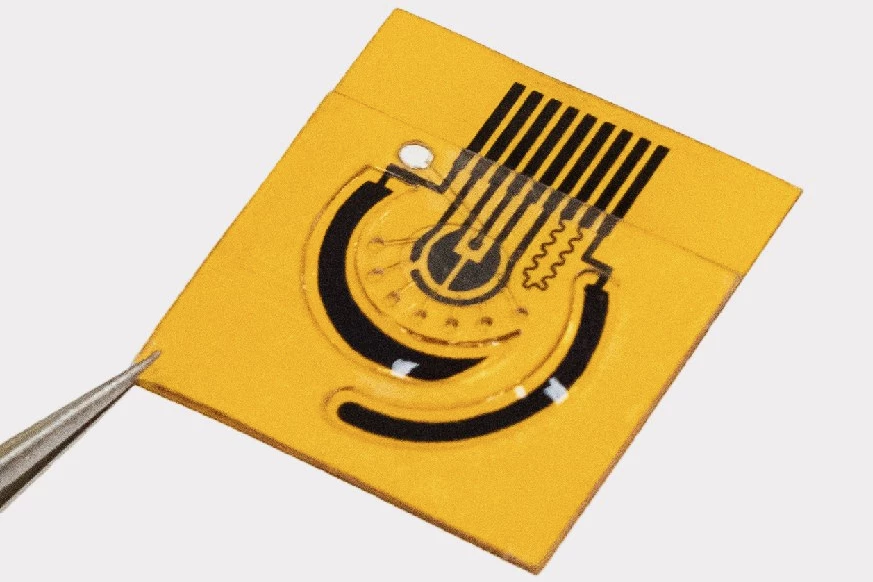Although there are now a number of skin-worn sensors which identify metabolites in sweat, the technology is limited in what it can detect, plus the sensors often aren't reusable. A new one, however, utilizes a "molecularly imprinted polymer" to be much more useful.
The experimental device was developed by a team at the California Institute of Technology (Caltech), led by Asst. Prof. Wei Gao.
Previously, Gao and his team had created sensors with embedded enzymes or antibodies which reacted with specific metabolite chemicals in the wearer's sweat. Among other things, unusually high or low levels of certain such chemicals could indicate specific disorders that require treatment. Unfortunately, though, the enzymes could only detect a relatively small number of metabolites. The antibodies were a bit more versatile, but they could only be used once.
Seeking a better-performing alternative, the researchers designed a sensor which incorporates a polymer film that generates an electrical current when it comes into contact with sweat. Importantly, forming a layer between that film and the skin is a second polymer that has been molecularly imprinted.
The imprinting process involves embedding molecules of the target metabolite within the polymer while it's still in a liquid state, allowing the polymer to set to a rubber-like consistency, then using a chemical process to remove the molecules from it. What results is a polymer sheet containing tiny molded holes which are the exact size and shape of the molecules.
When sweat comes into contact with that polymer – if little or none of the metabolite is present in the sweat – the liquid flows through the mostly open holes, creating a strong electrical current when it reaches the other polymer underneath. However, if high levels of the metabolite are present in the sweat, the molecules will plug many of the holes. This means that not as much sweat will be able to get through, so a weaker current will be produced.
Therefore, by monitoring the electrical signal produced by the sensor, it's possible to measure the concentration of the targeted metabolite in the wearer's sweat – and concentrations in the sweat typically correspond to those in the bloodstream. Application of a weak electrical current subsequently destroys the molecules that are blocking the holes, allowing the sensor to be reused.

The sensor does initially apply a small current of its own to the skin, in order to stimulate sweat production. Because its microfluidic design only requires a tiny amount of sweat, however, the current is very weak and reportedly not uncomfortable to the wearer. It has already been tested on volunteers in a lab, and should soon be the subject of larger clinical trials.
"This approach allows us to detect a bunch of new crucial nutrients and metabolites. We can monitor when we eat and watch nutrient levels change," said Gao. "It not only monitors nutrients, but also hormones and drugs. It can provide continuous monitoring for many health conditions."
A paper on the research was recently published in the journal Nature Biomedical Engineering.
Source: Caltech




